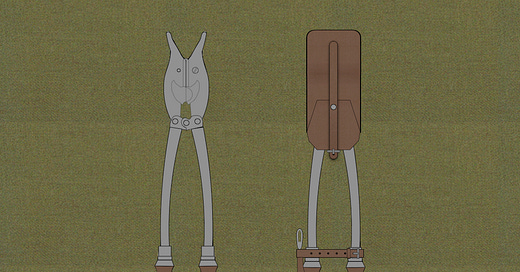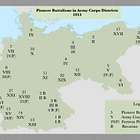Welcome to the Tactical Notebook, where you will find more than five hundred tales of armies that are, armies that were, and armies that might have been.
Recently, while doing a bit of research on German engineer units, I ran across a folder, dated marked “sketches of pioneer assault equipment, 1906-1909.” There, among drawings of scaling ladders and man-portable bridges, I found pictures of “engineer wire cutters, Model ‘07 [Pionier-Drahtschere ‘07].
The first thing that struck me about this piece of gear was its resemblance to the bolt-cutters used to cut locks off of lockers in high schools, barracks, and health clubs. Indeed, with handles that were 342 millimeters (13.5 inches) long, it was much bigger than the shears I had imagined when I read references to the wire cutters used in the First World War. This, in turn, got me thinking about the thickness of the barbed wire that German pioneers expected to encounter in the field, and, especially, when storming a modern fortress.
This thought challenged another one of my longstanding assumptions, that the wire used to build obstacles during the First World War got thicker over the course of the conflict. In particular, I had long assumed that much of the barbed wire used in the early days of trench warfare had been obtained from nearby farms, farm supply stores, and the like. I also assumed many months passed before significant amounts of sturdier wire, built especially for military purposes, began to arrive at engineer depots at the front.
The moral of this story, at least for me, is the power of small discoveries to change the way that a student of history makes sense of great events. Thus, I offer to my colleagues the advice that Frederick the Great gave to the young officers in his service, “Soignez les détails. Ils ne sont pas sans gloire.” (“Pay attention to details. They are not without glory.)
Sources:
“Sketches of Pioneer Assault Equipment” [Skizzen von Pionier-Sturmgeräten] Federal Military Archives [Bundesarchiv/Militärarchiv] PH 14/219
For Further Reading:











People also rarely think about the railways. The European railways allowed both sides of the conflict to move troops, equipment, and fortifications anywhere they needed it.
Compare it to today, the Russians can use at least 9 rail lines to get personnel and equipment to Donestk.